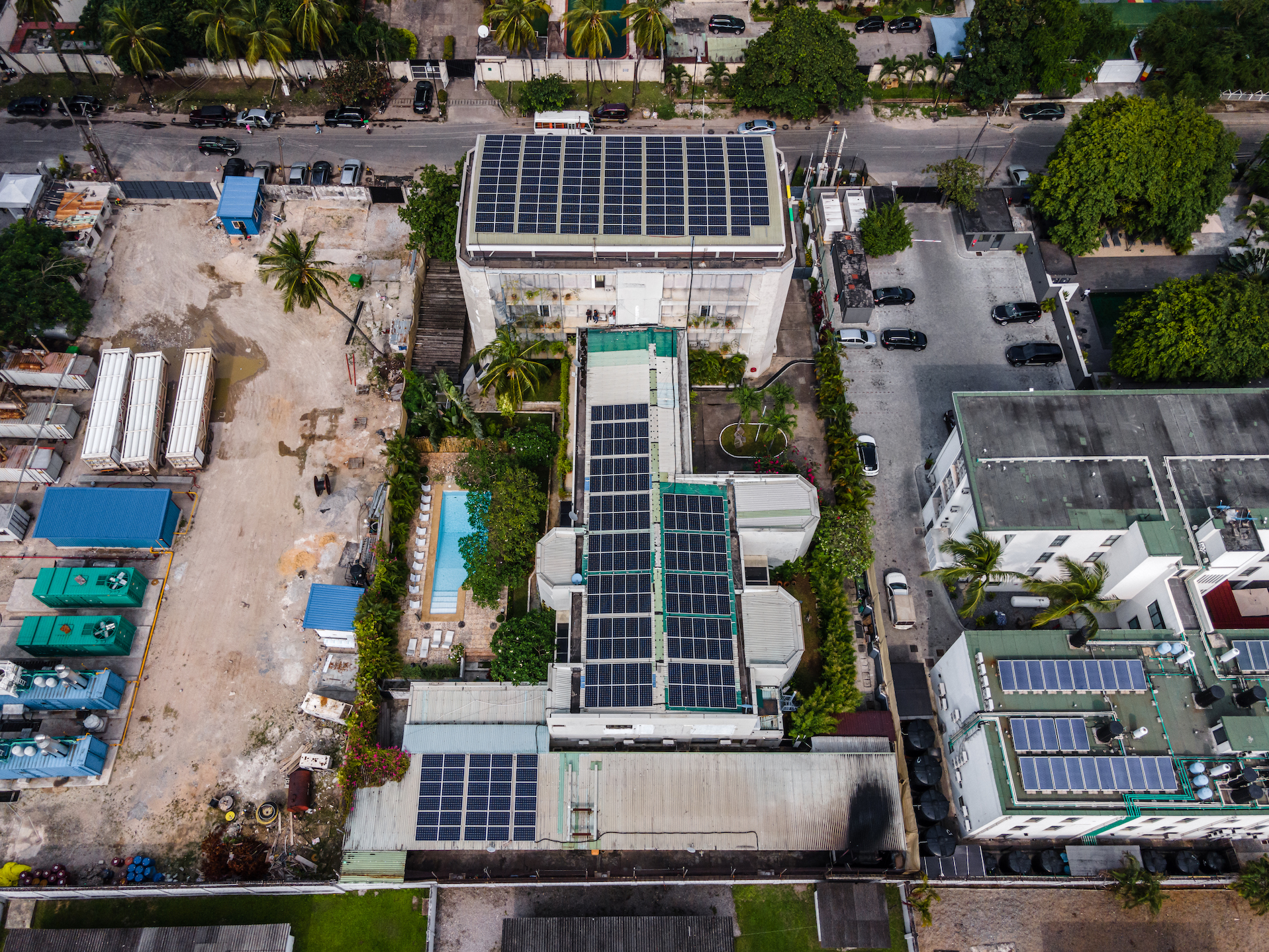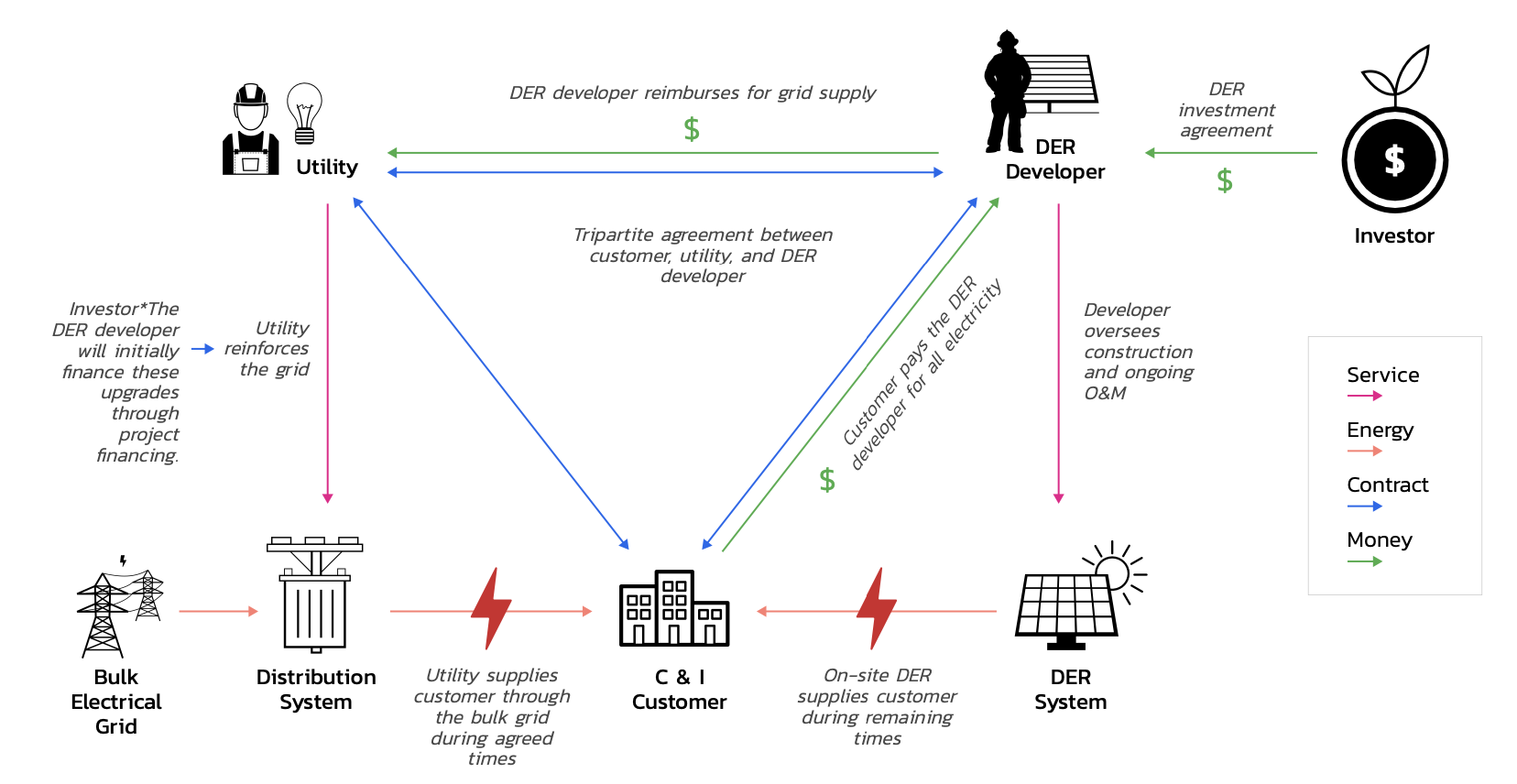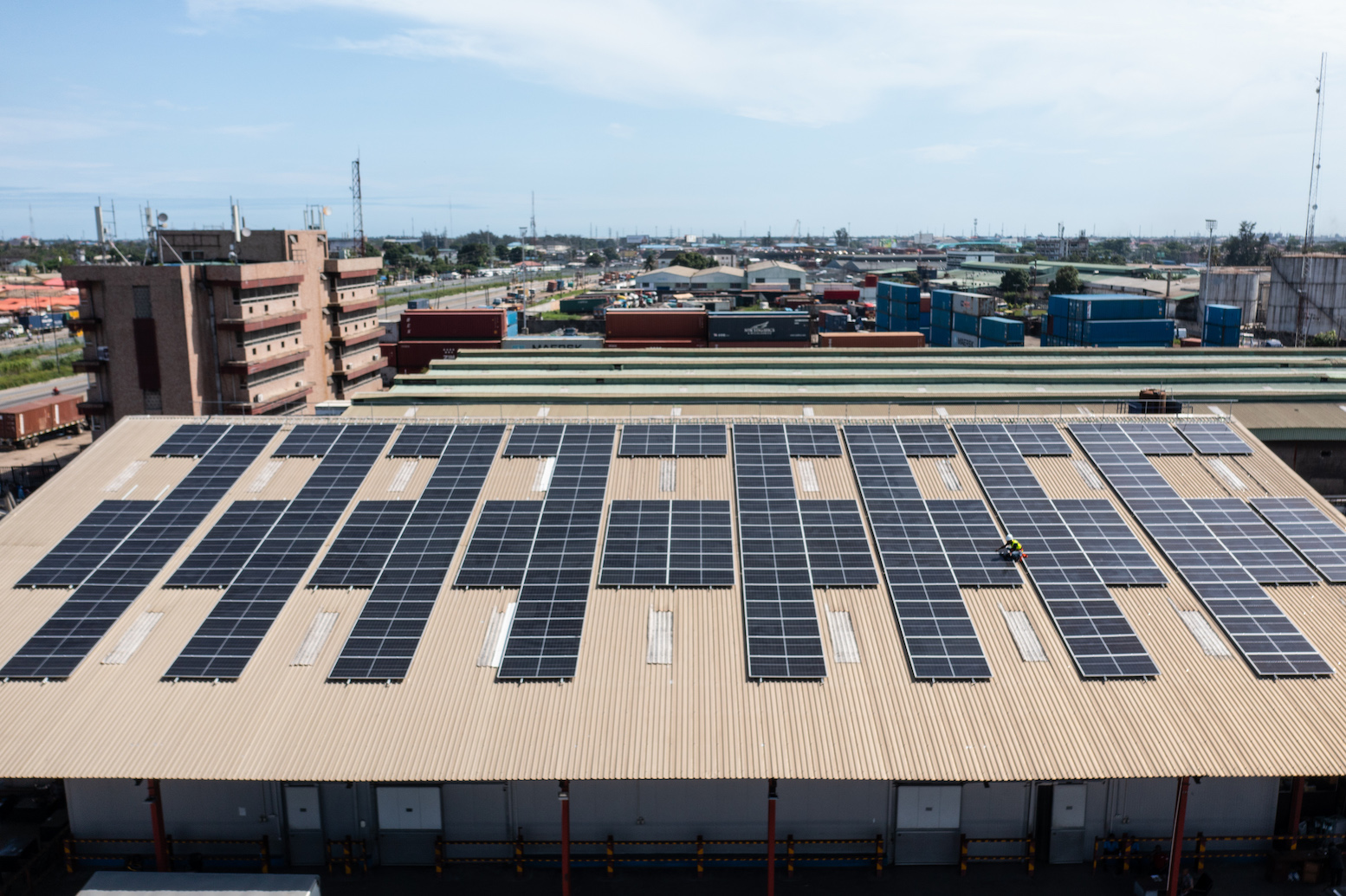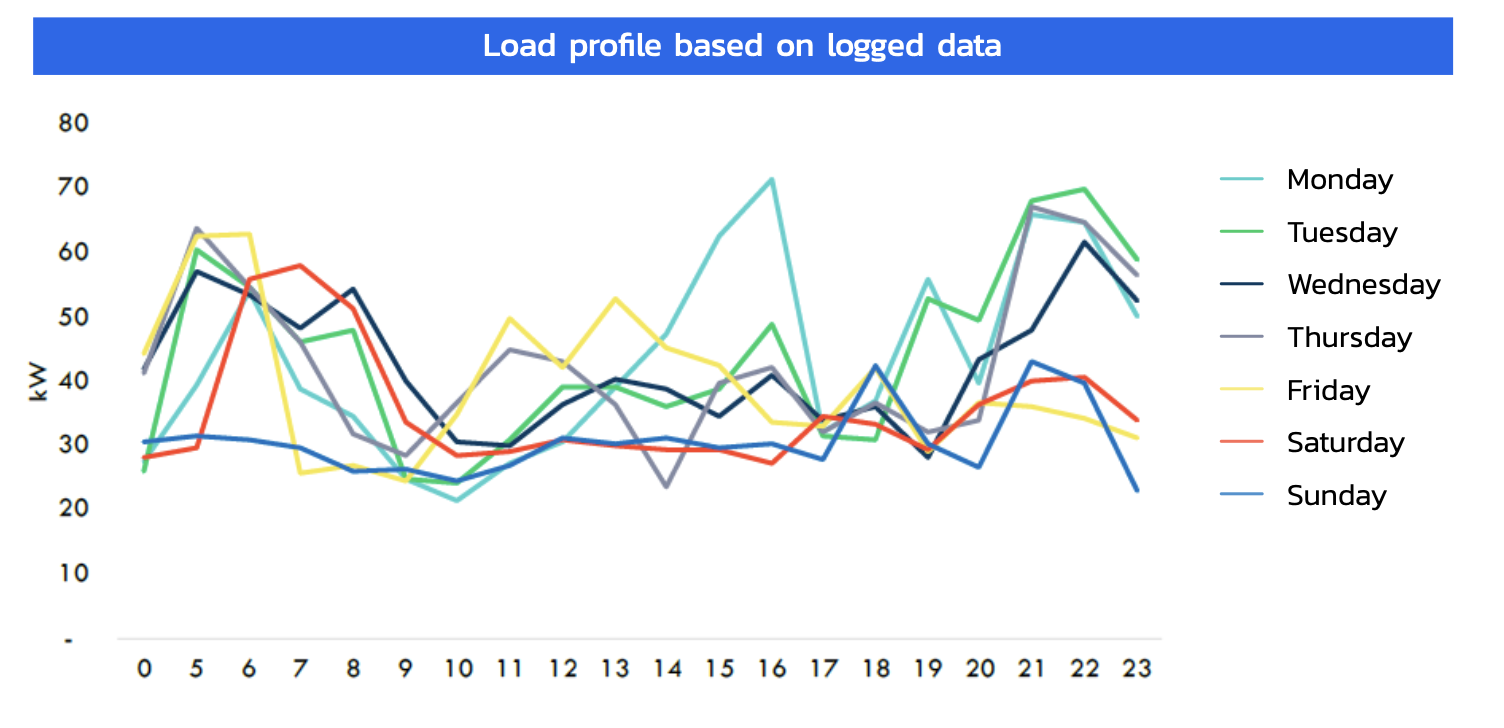Today, almost half of all African businesses rely on back-up diesel generators for power, if the grid goes out. According to a Wood Mackenzie study published in 2022, there was more than 100 GW of distributed diesel capacity operational across Africa. This seems like a lot, but generators provide a mere 7% of needed electricity supply, while costing consumers a whopping $20 billion a year in fuel costs, equivalent to 80% of their spend on grid electricity.
More than any country in sub-Saharan Africa, Nigeria’s distributed diesel generator capacity outstrips its grid-connected power-generation capacity.
That dependence is obvious when you visit Nigeria.
In a megapolis like Lagos, which around 22 million people call home, there’s no escaping the constant drone of generators. Businesses, hospitals, schools and residential buildings depend on these gas and diesel-guzzling machines to provide power during frequent power outages. If you run a business, self-generation is literally what keeps the lights on. Nearly half of electricity across the country is self-generated, largely with the help of small- and medium-scale generators. If put together, these generators have a capacity of almost 14 GW, 4 fold of what the national grid can reliably supply in power. (To put things in perspective, Nigeria can generate 14-15 GW in power but the transmission network can only carry 4 GW.)
Over the last two years, businesses have been hard hit by surging diesel prices. In the aftermath of Russia’s invasion of Ukraine, it soared to 800-900 Naira per liter, up nearly 200%. Even before the crisis, businesses had to allocate up to 40% of operational expenses to diesel. Today, to cope with high fuel costs, many companies across Nigeria are cutting working hours, laying off staff or shutting down. And with the removal of subsidies on other types of fuels in May 2023, the need for alternatives has never been felt this acutely. But there is hope on the horizon driven by the adoption of solar energy.
Over the last 5 years, Daystar has successfully deployed solar systems to hundreds of businesses across Nigeria. We’ve seen the sheer number of commercial & industrial (C&I) solar companies that have mushroomed to meet a growing market demand in our emerging industry. Installed independently from the grid, solar is providing Nigerian businesses with cheaper power with up to 30% cost savings and safeguarding against power cuts.

Given the stand-alone nature of their systems, C&I solar developers have historically been siloed from Distribution Companies (DisCos), privatized companies responsible for grid power distribution at a local level. While hybrid solar solutions with battery storage (often referred to as ‘distributed energy resources’) are able to integrate with the grid, allowing customers to still procure power from DisCos, solar developers and DisCos do not actively coordinate their available supply, leading inevitably to higher energy costs for businesses.
Moreover, DisCos are at risk of losing customers, who might find a solar-diesel model more attractive due to greater reliability. In this case, DisCos lose revenue, which means they have even fewer funds to reinvest in their networks.
And it is here where hybrid solar energy and grid-connected power systems can make a difference. If solar companies and DisCos join forces, they can bring forth a model that is cheaper and more sustainable for businesses. In this model, diesel generators could be entirely removed from a business’ self-generation set-up, saving the customer in energy costs and reducing their carbon emissions. In addition, with a secure stream of revenue (some of which might have been lost due to companies willingly disconnecting from the grid), DisCos could invest to improve the quality of their networks. While this idea looked great on paper, we wanted to test it in real life and analyze it from three points of view: the solar developer, the customer, and the distribution company.
In 2023, together with the Rocky Mountain Institute (RMI) and with funding by the United States Trade and Development Agency (USTDA), we ran a comprehensive feasibility study of this trilateral cooperation.
In the project, our goal was to create a ready pipeline of hybrid solar and grid-connected power systems for twenty businesses in Lagos and Abuja working in close cooperation with three DisCos, Abuja Electricity Distribution Company (AEDC), Eko Electricity Distribution Company (EKEDC), and Ikeja Electric (IE). We looked at 20 different businesses (from schools to churches to supermarkets to furniture manufacturers), and found a positive impact in 17 cases, with an average savings of 26%. Not only that, depending on the specific case and market conditions, DisCos could increase their profitability from 8% to up to a whopping 1,000%.
How the model works
While it will take time to truly disrupt and transform the way businesses across Nigeria procure their power, someone has to take the first step. With that in mind, let’s take a quick look at what the proposed model entails.
To start, the customer, the solar provider (like Daystar) and the DisCo sign a tripartite agreement, which defines both how power is supplied and the way payment is arranged.
Under the agreement, we would install a complete hybrid solar system with solar PV, cabling, and AC/DC inverters. For the customer, this requires no upfront investment. Our systems are fully financed, meaning that customers pay zero up-front costs for the system, which is a huge deterrent for African businesses to install large-scale solar systems. They only pay for electricity consumed, per an agreed tariff/kilowatt hour. If needed, we will also finance local grid upgrades, taking some of the financial burden off DisCos’ shoulders. DisCos would need to pay back over time.

As a result, the customer has the best of both worlds – a connection to the grid and an onsite solar plant. The solar system provides power during peak sun hours (9AM to 3PM), while the DisCo is responsible for providing energy the rest of the day. And thanks to the integrated backup option (batteries and generator), the customer would enjoy reliable power even if the grid experiences some downtime.
The financial side of the agreement is just as straightforward. It Includes a blended tariff that the customer pays directly to Daystar. Daystar then reimburses the DisCo for the power provided by the grid.
What businesses could the model work for?
When preparing our study, we wanted to see whether the model could work for a wide range of businesses. That’s why we looked into both industrial (processing plants, manufacturers) and commercial (educational facilities and hospitals) customers. One of the main selection criteria was high daytime energy demand – many of the potential customers were already relying on powerful diesel generators (rated at 60 kW or higher). Physical space to host the solar panels (be it on the roof or a plot of land) was another critical factor. Our estimates show that an area of at least 500 m2 is required to make the solution feasible.
As the model relies on long-term cooperation, it is important that the customer is willing to explore a hybrid solar solution in the first place. Just as critical was the customer’s opinion of the DisCo – it had to be positive or at least neutral as it is an integral part of the solution.

To properly model these systems, we visited prospective customers and toured their facilities, aiming to collect as much information, feedback, and data as possible. As most customers do not keep measured energy consumption data or detailed documentation of their energy expenditures, it was difficult to build a comprehensive picture without some form of intervention. To properly assess the load, we installed data loggers onsite for those customers who did not have metered consumption data. With this data, we were able to estimate the annual load profiles and build simulations.
Estimation of potential hybrid in-grid solar solutions
Harnessing all available data, we used the HOMER Pro software suite to estimate the system and simulate the hourly dispatch to serve expected customer loads. We sought to optimize the system for both cost-effectiveness and reliability. Our aim for the solar was to provide at least 95% reliability. Grid availability, or course, was an equally important factor, and we ran models with availability ranging from 50% to 90%.
When building the model, we also factored in battery and solar panel expenditures, a system’s lifespan, fuel costs, and other factors. As each case is individual, the final system design and sizing can be finetuned based on customer needs and procurement options.


From the modeling stage we discovered that a solar-battery-diesel hybrid system is most cost-effective when it comes to providing affordable and reliable power. In our design, the preferred technology choices for the system are solar PV, li-ion battery storage (for its higher efficiency and longer lifespan compared to other battery technology) and diesel generator as backup.
Returning defectors back to the grid
During our site visits, one thing became apparent. More Nigerian businesses than we ever imagined are either voluntarily defecting from the grid or are relying on self-generated power from day one. They choose this route for a number of reasons, with unpredictable uptime and voltage being the most prominent. For companies operating expensive machinery, jumps in voltage can literally fry their equipment. We anecdotally knew that some large manufacturers, including pharmaceutical and fast-moving consumer goods (FMCG) companies operating in the Agbara Industrial Zone in Ogun State, had long ago opted out of the grid permanently, but the scale that this is happening across the country truly surprised us.
By providing customers with a reliable energy setup, we are then able to connect more customers back to the grid, providing DisCos with additional revenue. To make the deal more attractive for them (and to ensure DisCos can meet required availability standards), we will be responsible for certain specific upgrades to the grid. During the project, we worked with Afry, a network assessment consultant, to identify distribution network upgrades. The good thing about these upgrades is that most of them are one-offs – replacing damaged feeder components, repairing leaning poles, and so on.
The promise of scale: 170k Nigerian businesses, 3.3GW of solar capacity, and $6.5 billion investment
By replacing the burning of diesel and petrol, our utility-enabled business model has real potential to reduce energy costs for customers. At the same time, it has the ability to increase DisCo revenue by connecting new customers to the grid, thereby increasing consumption. At scale, the business model can potentially apply to 170,000 businesses across Nigeria, eventually unlocking 3.3GW of solar capacity and $6.5 billion investment opportunity.
We believe we can start that transformation today. From the study alone, we have a clear pipeline of projects amounting to 40 MW in capacity. And by popularizing this model in Nigeria, we can help the country to move towards a greener, more reliable energy future, setting a precedent for other Sub-Saharan African countries.
Interested to learn more?
Access the complete Scaling Utility-Enabled Distributed Energy Resources for Nigerian Commercial & Industrial (C&I) Customers study here.
